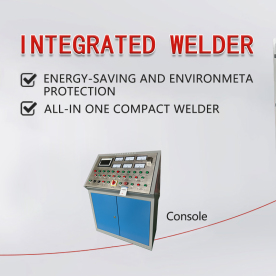[Induction heating equipment]Understanding Induction Heating Equipment: Applications, Benefits, and Future Prospects in Various Industries
News 2024-12-23
Induction heating equipment has revolutionized the way heat is generated and applied in various industrial applications. With the ability to efficiently deliver heat to metal components without direct contact, induction heating technology has become a preferred choice for many manufacturing processes. This article explores the fundamentals of induction heating equipment, its applications across different industries, the benefits it offers, and its future prospects.
What is Induction Heating?
Induction heating is a process that uses electromagnetic induction to heat electrically conductive materials, typically metals. When an alternating current flows through a coil, it creates a magnetic field that induces an electric current in the conductive material placed within the magnetic field. This induced current generates heat due to the material's electrical resistance, allowing for rapid and precise heating.
Types of Induction Heating Equipment
Induction heating equipment comes in various forms, each designed for specific applications. The most common types include:
1. **Induction Heating Power Supplies**: These convert electrical energy into high-frequency alternating current, which powers the induction coils. They are essential for controlling the temperature and heating time.
2. **Induction Coils**: Designed to generate the electromagnetic field, these coils can be shaped in various forms to suit different heating applications. The design of the coil can significantly affect the efficiency of the heating process.
3. **Induction Furnaces**: Used primarily for melting metals, induction furnaces utilize induction heating to reach high temperatures required for melting and alloying materials, making them invaluable in metal foundries.
4. **Induction Brazing and Soldering Equipment**: These specialized tools allow for precise heating of metals at the joints, enabling effective brazing or soldering without affecting the surrounding areas.
5. **Induction Hardening Equipment**: This equipment is used to harden the surface of metal components by heating them to a specific temperature before rapidly cooling them, enhancing their durability and wear resistance.
Applications of Induction Heating Equipment
Induction heating technology finds application in numerous industries, including:
- **Automotive**: Induction heating is used for processes like hardening gears, crankshafts, and other components, ensuring they meet high performance and durability standards.
- **Aerospace**: In the aerospace sector, induction heating equipment is critical for soldering, brazing, and heat-treating components that must withstand extreme conditions.
- **Manufacturing**: Many manufacturing processes, such as forging, casting, and machining, utilize induction heating for efficient and effective metal processing.

Understanding Induction Heating Equipment: Applications, Benefits, and Future Prospects in Various Industries
- **Jewelry Making**: Jewelers use induction heating for soldering precious metals, enabling them to create intricate designs without damaging the surrounding material.
Benefits of Induction Heating Equipment

Understanding Induction Heating Equipment: Applications, Benefits, and Future Prospects in Various Industries
1. **Efficiency**: Induction heating equipment provides rapid and uniform heating, which translates to reduced energy consumption and shorter cycle times.
2. **Precision**: The ability to control temperature and heating time allows manufacturers to achieve precise and repeatable results, critical for quality assurance.
3. **Safety**: Since induction heating does not involve an open flame or direct contact with the heat source, it poses fewer risks of burns or fire hazards.
4. **Environmental Impact**: Induction heating is often considered a greener alternative to traditional heating methods, as it reduces emissions and can minimize waste.

Understanding Induction Heating Equipment: Applications, Benefits, and Future Prospects in Various Industries
Future Prospects
As industries continue to advance, the role of induction heating equipment is expected to expand. Innovations in technology, such as improvements in power supply efficiency and coil design, offer the potential for even greater energy savings and process efficiencies.
Additionally, with increasing emphasis on sustainable manufacturing practices, induction heating’s minimal environmental impact is likely to drive its adoption across various sectors.
In conclusion, induction heating equipment is an essential component of modern manufacturing, offering a plethora of advantages that enhance productivity and safety. As technology continues to evolve, its applications and benefits will undoubtedly broaden, making it a pivotal solution in industry’s quest for efficiency and sustainability.
